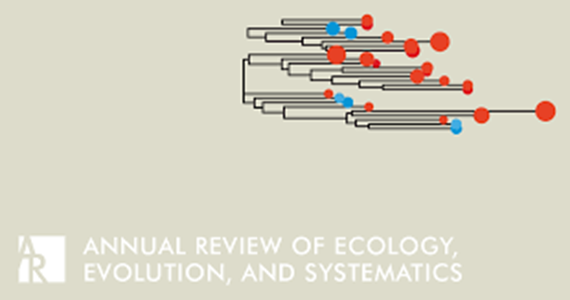The Alignment of Natural and Sexual Selection
IF 11.2
1区 生物学
Q1 ECOLOGY
Annual Review of Ecology, Evolution, and Systematics
Pub Date : 2021-08-31
DOI:10.1146/annurev-ecolsys-012021-033324
引用次数: 14
Abstract
Sexual selection has the potential to decrease mean fitness in a population through an array of costs to nonsexual fitness. These costs may be offset when sexual selection favors individuals with high nonsexual fitness, causing the alignment of sexual and natural selection. We review the many laboratory experiments that have manipulated mating systems aimed at quantifying the net effects of sexual selection on mean fitness. These must be interpreted in light of population history and the diversity of ways manipulations have altered sexual interactions, sexual conflict, and sexual and natural selection. Theory and data suggest a net benefit is more likely when sexually concordant genetic variation is enhanced and that ecological context can mediate the relative importance of these different effects. Comparative studies have independently examined the consequences of sexual selection for population/species persistence. These provide little indication of a benefit, and interpreting these higher-level responses is challenging. Expected final online publication date for the Annual Review of Ecology, Evolution, and Systematics, Volume 52 is November 2021. Please see http://www.annualreviews.org/page/journal/pubdates for revised estimates.自然选择和性选择的一致性
通过一系列非性适应的代价,性选择有可能降低种群的平均适应度。当性选择倾向于具有高非性适应性的个体时,这些成本可能会被抵消,从而导致性选择和自然选择的一致。我们回顾了许多操纵交配系统的实验室实验,这些实验旨在量化性选择对平均适合度的净影响。这些必须根据人口历史和操纵方式的多样性来解释,这些方式改变了性互动、性冲突、性选择和自然选择。理论和数据表明,当两性和谐的遗传变异得到增强,生态环境可以调节这些不同影响的相对重要性时,净收益更有可能出现。比较研究独立地考察了性选择对种群/物种持久性的影响。这些几乎没有提供益处的迹象,并且解释这些更高层次的反应是具有挑战性的。预计《生态、进化和分类学年度评论》第52卷的最终在线出版日期为2021年11月。修订后的估计数请参阅http://www.annualreviews.org/page/journal/pubdates。
本文章由计算机程序翻译,如有差异,请以英文原文为准。
求助全文
约1分钟内获得全文
求助全文
来源期刊
CiteScore
19.90
自引率
1.70%
发文量
21
期刊介绍:
The Annual Review of Ecology, Evolution, and Systematics is a scholarly publication that has been in circulation since 1970. It focuses on important advancements in the areas of ecology, evolutionary biology, and systematics, with relevance to all forms of life on Earth. The journal features essay reviews that encompass various topics such as phylogeny, speciation, molecular evolution, behavior, evolutionary physiology, population dynamics, ecosystem processes, and applications in invasion biology, conservation, and environmental management. Recently, the current volume of the journal transitioned from a subscription-based model to open access through the Annual Reviews' Subscribe to Open program. Consequently, all articles published in the current volume are now available under a CC BY license.

 求助内容:
求助内容: 应助结果提醒方式:
应助结果提醒方式:


